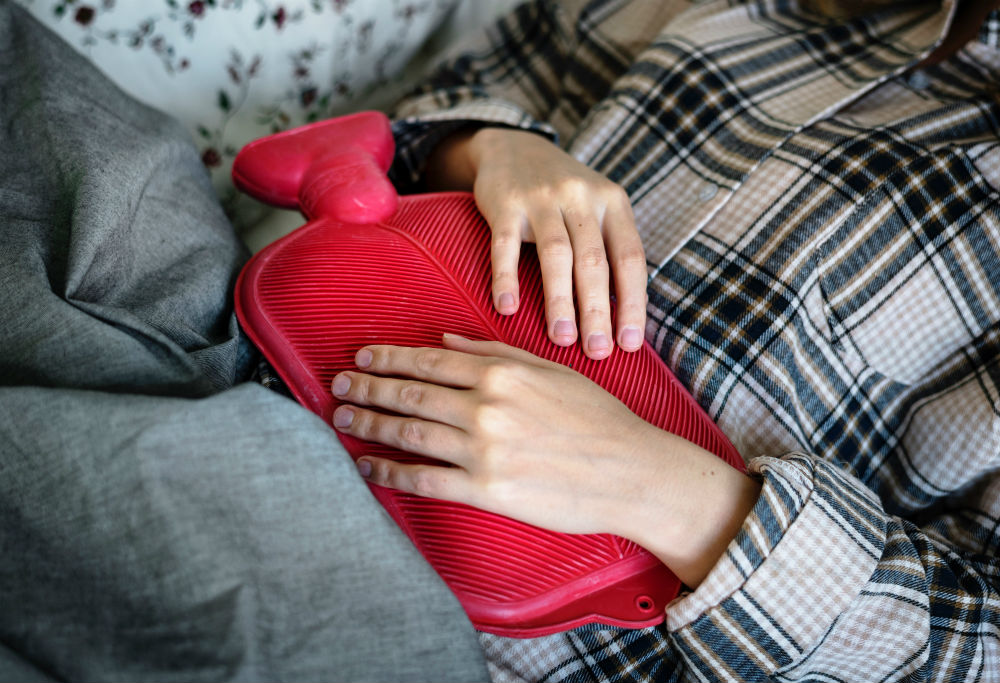The most common presentation of hemorrhoid disease is rectal bleeding, pain, itcing, or prolapse. Because these symptoms are extremely nonspecific and may be seen in a number of anorectal diseases, the physician must therefore perform an adequate rectal examinationto (including anoscopy) to confirm the diagnosis.
Minor rectal bleeding is one of the common symptoms that the hemorrhoid patients seek for the medical care. Most hemorrhoidal bleeding occurs with bowel movement, and it is caused by passing stool, particularly hard stools, and a lot of times that bleeding is a bright red in nature, and it may drip into the toilet sometimes.
 Severe pain is not a common symptom of hemorrhoids, because internal hemorrhoid happens in the area above the dentate line that is supplied by the visceral nerve, like those found within the intestines, which sense pressure rather than pain. Mild aching pain and skin iritating pain in the rectum is common because of local inflammation.
Severe pain is not a common symptom of hemorrhoids, because internal hemorrhoid happens in the area above the dentate line that is supplied by the visceral nerve, like those found within the intestines, which sense pressure rather than pain. Mild aching pain and skin iritating pain in the rectum is common because of local inflammation.
As the vessel complex of an internal hemorrhoid becomes varicose and continues to enlarge, it bulges into the anal canal and loses its normal anchoring, becoming a prolapsing internal hemorrhoid. The prolapsing hemorrhoid usually returns into the anal canal or rectum on its own after bowel movement, or can be pushed back inside using one’s finger, but usually prolapses again after the next bowel movement.
The rectal mucosal lining that has been pulled down secretes mucus and moistens the anus and its surrounding skin, while the stool itself can also leak onto the anal skin. Itchiness often occurs as a result of this dual presence of stool and moisture.
In general, symptoms of external hemorrhoids are different than those of internal hemorrhoids. External hemorrhoids can be felt as bulges at the anus, but rarely display any of the same symptoms seen with internal hemorrhoids. Occasionally, the external hemorrhoids or anal tag turns out to be quite large, which can make anal hygiene (cleaning) difficult or irritate the anus.
When the varicose vein complex of hemorrhoids ruptures, blood clots occur and build up the pressure inside the lump. This condition, known as thrombosed external hemorrhoid, causes an extremely painful bluish anal lump and often requires medical attention. The somatic nerve in the anal canal (below the dentate line) can sense pain, this is why the patients feel significant pain when they develop thrombosed external hemorrhoids. Thrombosed hemorrhoids may heal with scarring and leave a tag of skin protruding from the anus.
 Constipation is one of the most common bowel disorders affecting American adults, with roughly 20 percent of the population suffering from hard, painful stools. Defined as having fewer than three bowel movements per week for several weeks, constipation occurs when the colon absorbs too much water from the food passing through it, creating dry stool that’s extremely difficult to pass.
Constipation is one of the most common bowel disorders affecting American adults, with roughly 20 percent of the population suffering from hard, painful stools. Defined as having fewer than three bowel movements per week for several weeks, constipation occurs when the colon absorbs too much water from the food passing through it, creating dry stool that’s extremely difficult to pass. 3. Exercise more – Being more active is always beneficial to your health! Hitting the gym or simply going for a jog outside helps aid food breakdown and reduce the time it takes food to move through the large intestine. The less time food sits in your colon, the more water it retains to help ease stool passage later.
3. Exercise more – Being more active is always beneficial to your health! Hitting the gym or simply going for a jog outside helps aid food breakdown and reduce the time it takes food to move through the large intestine. The less time food sits in your colon, the more water it retains to help ease stool passage later. When considering
When considering  Bleeding from your rectum or anus is never a pleasant experience, and it can understandably cause immediate panic. Generally, bright red blood indicates bleeding in the lower rectum, while dark red blood indicates bleeding from deeper and further up in the body. While passing dark red blood is usually a sign of digestive bleeding and requires immediate attention,
Bleeding from your rectum or anus is never a pleasant experience, and it can understandably cause immediate panic. Generally, bright red blood indicates bleeding in the lower rectum, while dark red blood indicates bleeding from deeper and further up in the body. While passing dark red blood is usually a sign of digestive bleeding and requires immediate attention, 



